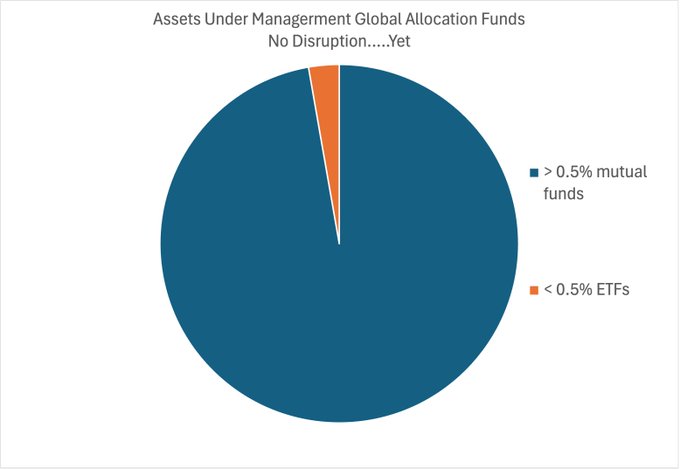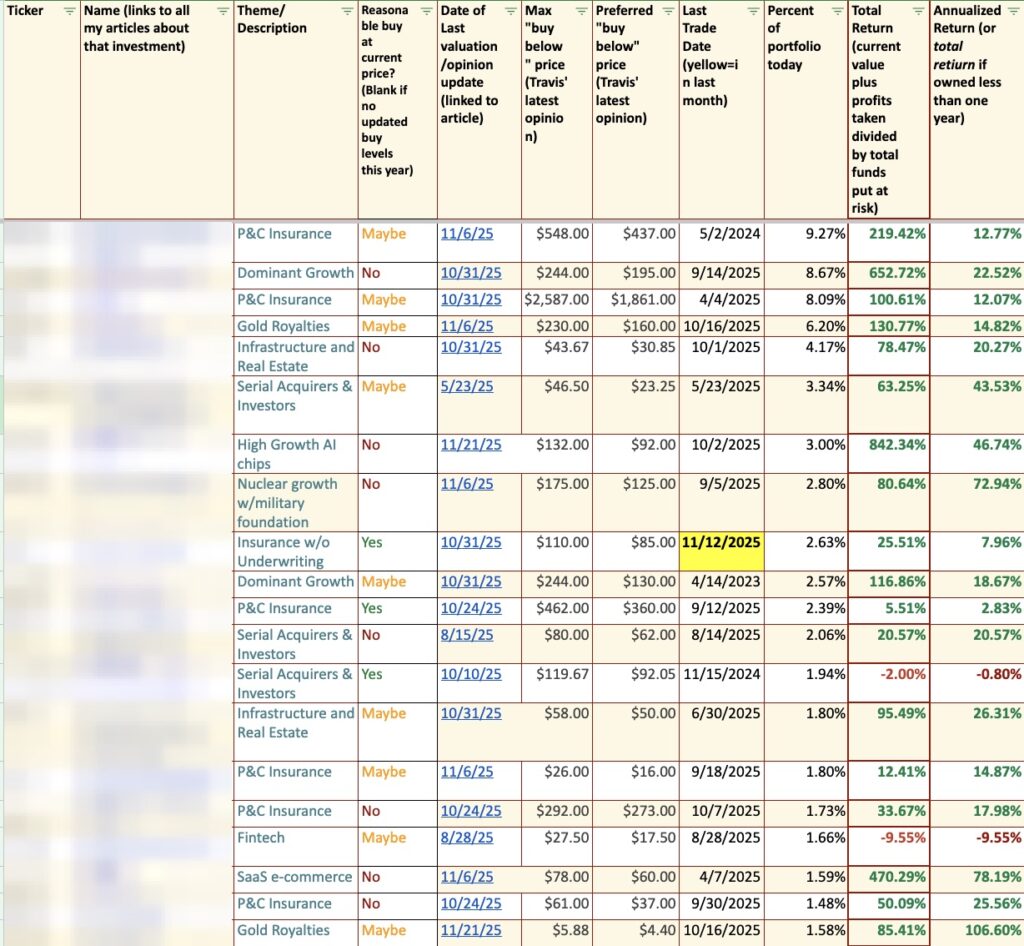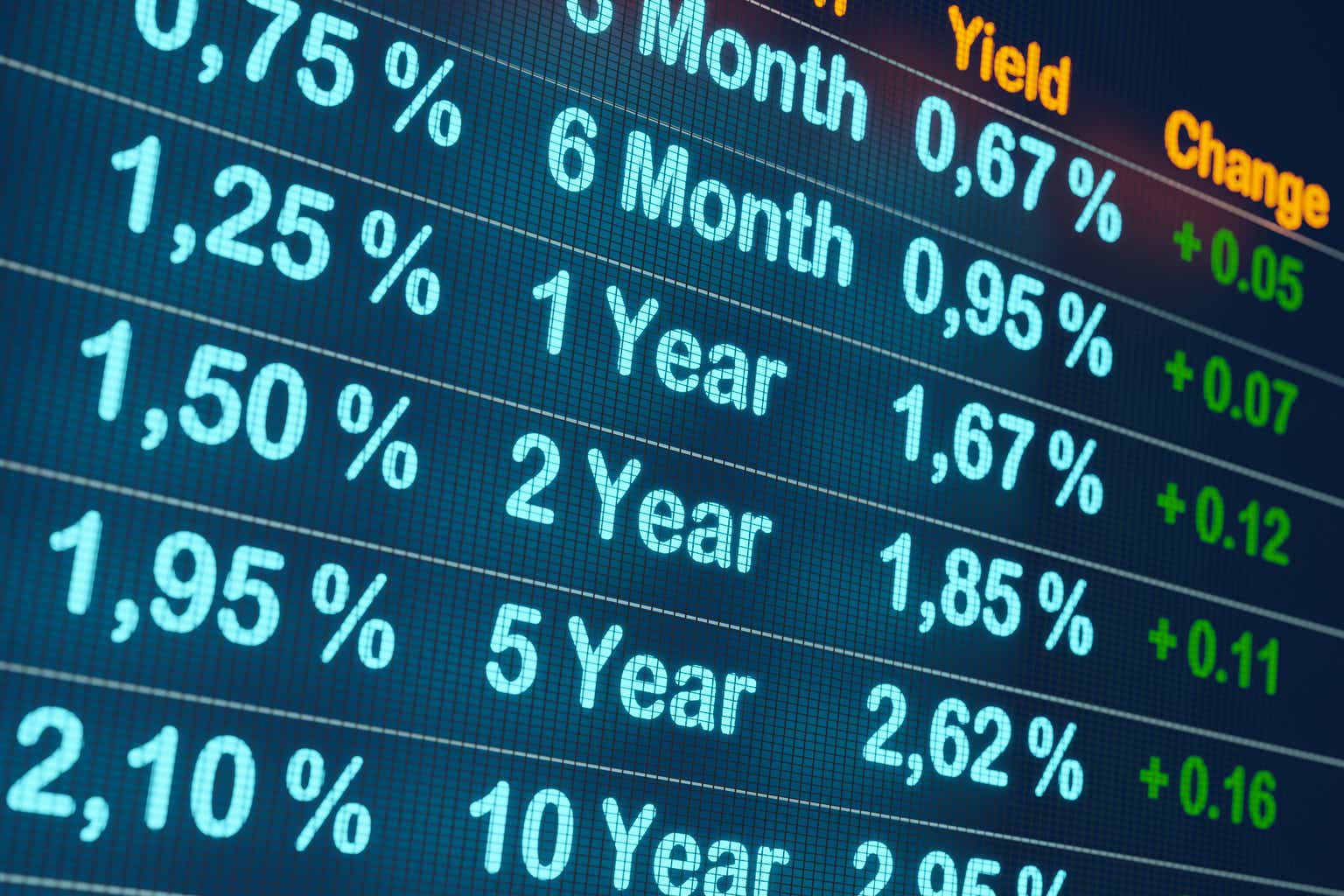shaunl
As you may have heard marine shipping rates can be very volatile, moving up and down as many factors come to bear.
Container shipowners, such as Global Ship Lease (NYSE:GSL), reaped the benefits of high post-COVID charter rates, putting up big revenue and earnings growth numbers. While those very high rates are expected to subside in 2023, recent rate declines have been mild for sub-10,000 TEU vessels, GSL’s focus area.
However, more importantly, GSL’s management took advantage of the high rates environment in 2021-22 via locking in longer charters at high rates for longer charter terms. Almost half of its $2.1B charter backlog total was from the 19 charters secured during the course of 2022 and in Q1 2023.
That puts GSL in an enviable position in this current uncertain economic environment, in which spot rates may be pressured by recessionary events, as its fleet is 93% chartered in 2023, and 74% chartered in 2024.
GSL site
Company Profile:
Global Ship Lease is a container ship owner, leasing ships to container shipping companies under industry-standard, fixed-rate time charters. The Company is a Marshall Islands Corporation, with offices in London and Athens, and has been listed on the New York Stock Exchange since August 15, 2008.
GSL focuses on mid-size Post-Panamax and smaller container ships, the workhorses of the global fleet, which tend to serve the faster-growing non-Mainlane and intra-regional trades collectively representing over 70% of global containerized trade volumes. Global Ship Lease owns 64 container ships, ranging from 2,207 to 11,040 TEU, with an aggregate capacity of 341,230 TEU. 32 ships are wide-beam Post-Panamax. (GSL site)
While management has diversified GSL’s customer base over the years, there’s still 28% exposure to CMA CGM, its biggest customer. Hapag-Lloyd, Maersk, and ZIM are next in line, accounting for 49% of GSL’s contracted revenue, down from 54% in Q3 ’22, mainly due to ZIM exposure decreasing from 15% to 10%:
GSL site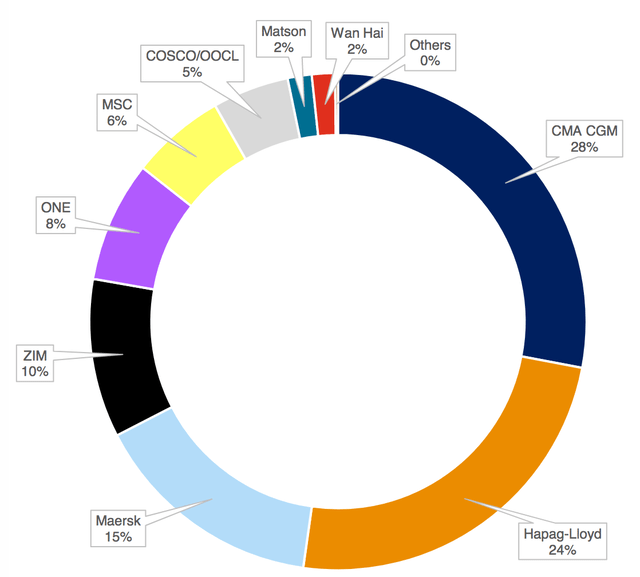
Earnings:
Q4 ’22 had high single-digit gains in operating revenue, net income and diluted EPS, a 16% rise in normalized EPS, and a 25% gain in adjusted EBITDA. On the expense side, management’s debt reduction program reduced Interest expense by 30% in Q4 ’22.
For full year 2022, GSL had strong 2-digit gains in net income, diluted EPS, normalized EPS, and adjusted EBITDA, with operating revenues up 44%. Interest expense rose 8.75%, much less than the amount we’ve seen in many other companies for full-year 2022.
Hidden Dividend Stocks Plus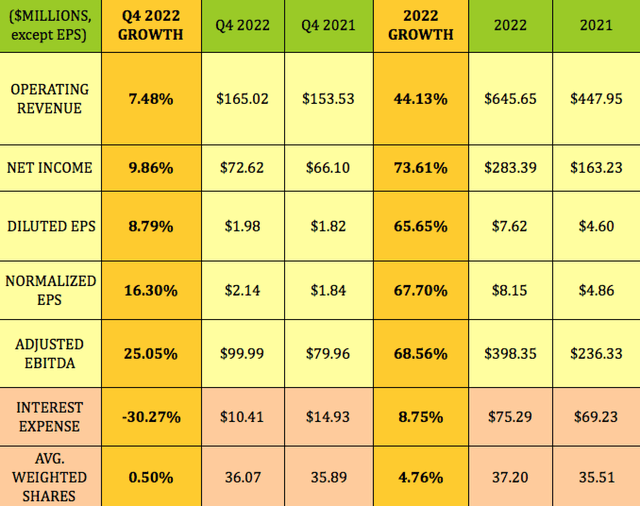
GSL’s fleet had 94.2% utilization in Q4 ’22, up from 92% in Q4 ’21. Full-year 2022 utilization was 96.5% vs. 94.3% in 2021, with operating days up 23.5%, to 22,654:
GSL site
Looking forward, at prevailing multi-year charter rates in February 2023, management estimates spot rate revenue at ~$30M in 2023, rising to $140M in 2024, with contracted revenue falling ~5% to $611M in 2023, and declining ~12% further in 2024, to $536M.
However, they estimate that adjusted EBITDA would rise ~12.5% in 2023, to $448M, and ~5.5% in 2024, to $473M:
GSL site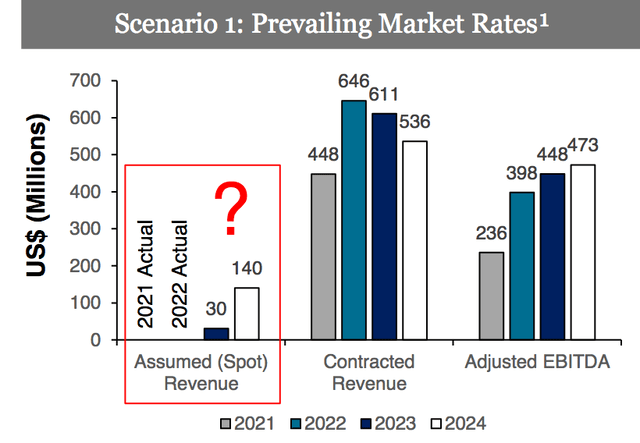
Using a much longer, 15-year average, they estimate similar adjusted EBITDA of $450M in 2023, but a higher figure of $486M in 2024:
GSL site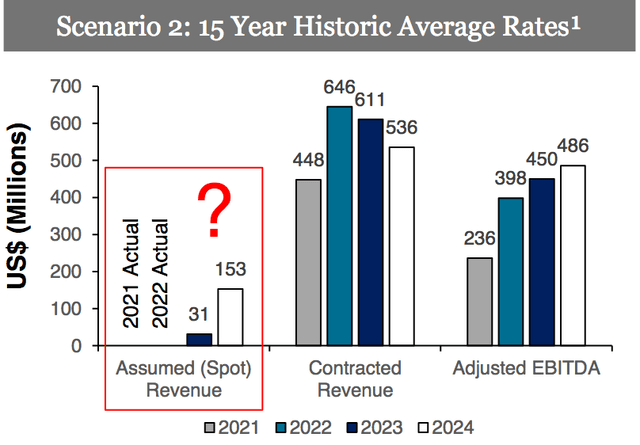
Tailwinds:
The industry’s order book for new vessels is growing rapidly, up 51%, for larger, 10K-plus TEU vessels, but, fortunately for GSL, not as much for smaller, sub-10K TEU vessels, its area of focus, with those sizes up just 14.3%.
GSL site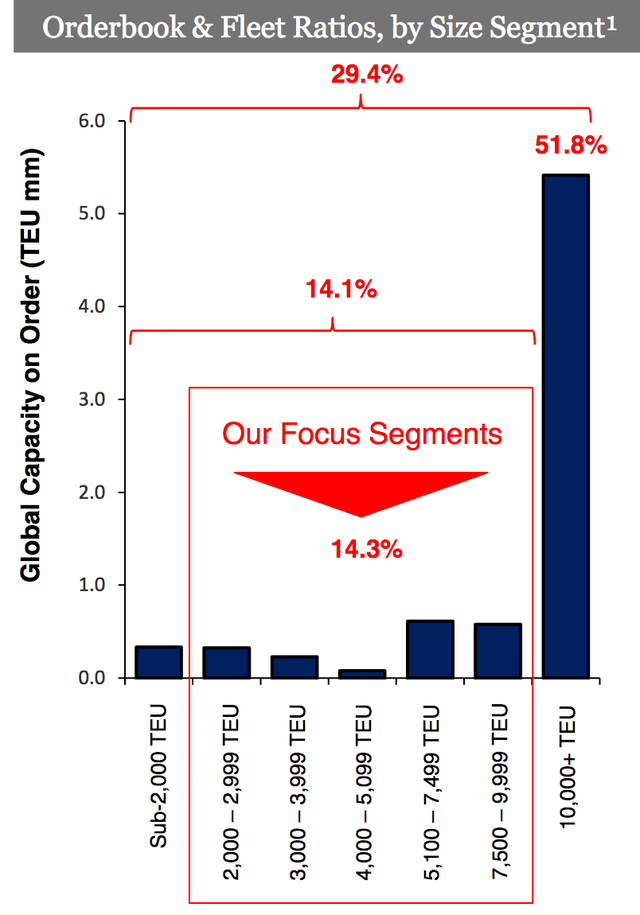
Stricter environmental regulations also will put pressure on vessels, effectively slowing them down, which creates more ton miles and subsequent demand.
Dividends:
GSL didn’t pay a dividend in 2016 – 2020 – management began paying a $.25 quarterly dividend in Q2 ’21, and then increased the dividend by 50% in Q2 to $0.375/share. At its 4/6/23 closing price of $18.41, GSL yields 8.15%. It should go ex-dividend next on ~5/23/23, with a ~6/2/23 pay date.
Hidden Dividend Stocks Plus
Management maintained a conservative EPS/dividend payout ratio, ranging from 15.4% to 25.3%, with a trailing average of 19.21%:
Hidden Dividend Stocks Plus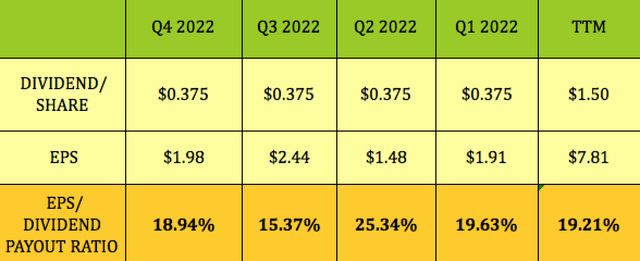
GSL also has its Cumulative Perpetual Preferred Series B shares (GSL.PB), which are selling near their $25 call value, with a ~8.6% dividend yield.
Buybacks:
GSL has a $40M Buy-back Authorization for share repurchases, management repurchased a total of 582,178 Class A common shares during January 2023 for a total investment of $10M. Re-purchase prices ranged between $16.12 and $18.17/common share, with an average price of $17.16
Taxes:
“Distributions we pay to U.S. unitholders will be treated as a dividend for U.S. federal income tax purposes to the extent the distributions come from earnings and profits (E&P) and as a non-dividend distribution or a return of capital (ROC) to the extent the distributions exceed E&P.” (GSL site)
Profitability and Leverage:
Trailing ROA, ROE, and EBITDA Margin were all roughly steady in Q4 ’22, with ROA and EBITDA Margin above industry averages, and ROE in line. Debt/Equity and Net Debt/EBITDA leverage both improved during Q4, as did EBITDA/Interest.
Hidden Dividend Stocks Plus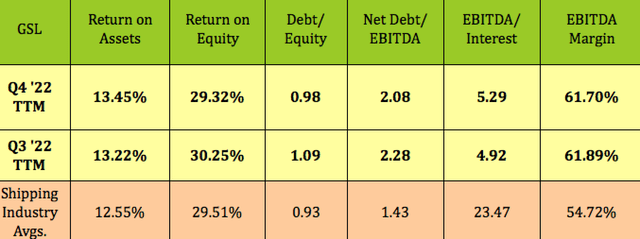
Debt and Liquidity:
Management has dramatically decreased debt leverage over the past five years, dropping it from 8.4X to 2X, in 2018 – 2022. Total debt decreased by 12.5% in 2022, a net amount of $136.1M.
GSL site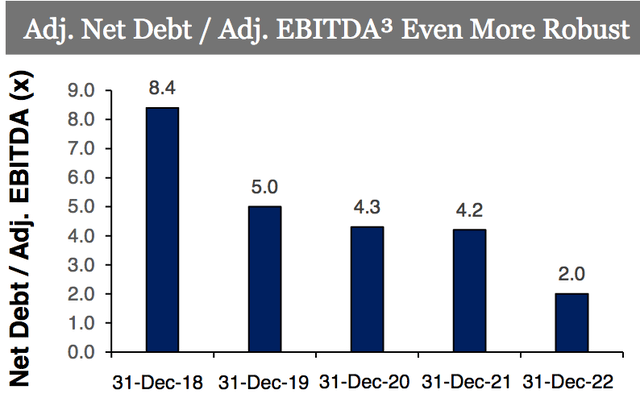
GSL has no debt maturities before 2026, and an overall low cost of debt despite the global high interest rate environment, with all of its floating interest rates fully hedged, capping the floating rate at 75 basis points, with a weighted average cost of debt of 4.53%, and an average ~3% coupon.
“There is currently ~$220M of headroom available under the 75 basis points interest rate cap, which would reduce the effective cost of any additional floating rate debt we may price.” (Q4 call)
GSL site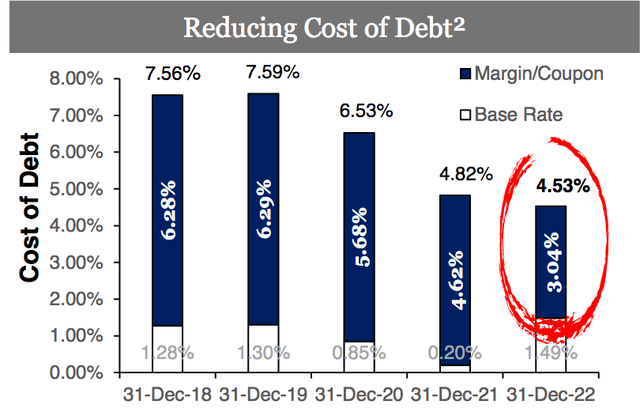
GSL had $106M in unrestricted cash as of 12/31/22. Its debt is rated BB Stable by Standard & Poor’s, and B-1 positive by Moody’s.
Performance:
GSL has outperformed the shipping industry and the S&P 500 over the past six months, and so far in 2023:
Hidden Dividend Stocks Plus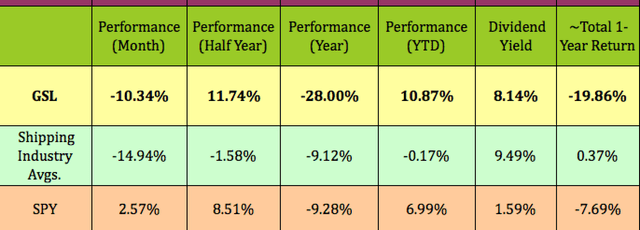
GSL looks oversold on its slow stochastic chart:
fnvz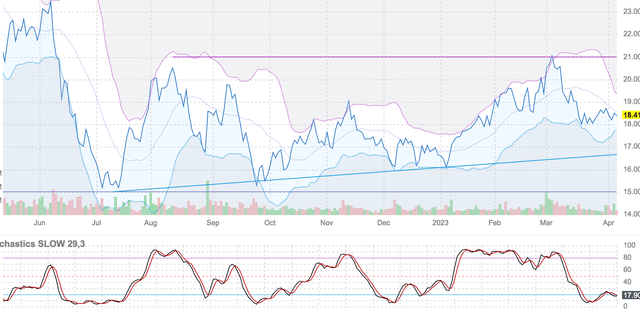
Analysts’ Targets:
At its 4/6/23 price of $18.41, GSL is 26% below street analysts’ lowest target price of $25.00, and over 42% below the $32.00 average price target:
Hidden Dividend Stocks Plus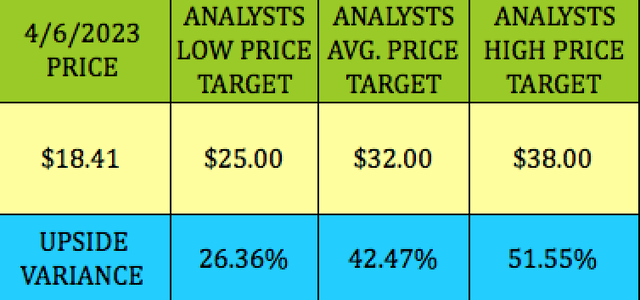
Valuations:
While its 8.15% dividend yield is a bit lower than the industry average, GSL looks very undervalued vs. its industry on a trailing and forward P/E basis, in addition to an EV/EBITDA basis.
Hidden Dividend Stocks Plus
Parting Thoughts:
We rate GSL a buy based upon its attractive, well-covered dividend yield, its lower leverage, and its better-than-average earnings prospects in 2023 and 2024, due to its high % of charters booked. If you’re leery of buying in this current mixed up environment, there are attractive put option-selling opportunities below the common share price.
All tables furnished by Hidden Dividend Stocks Plus, unless otherwise noted.




